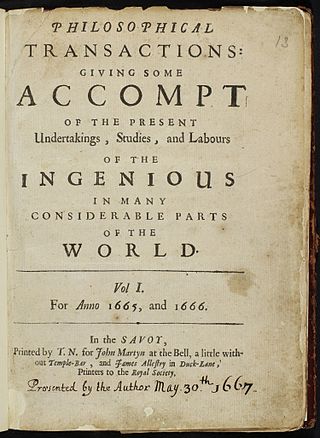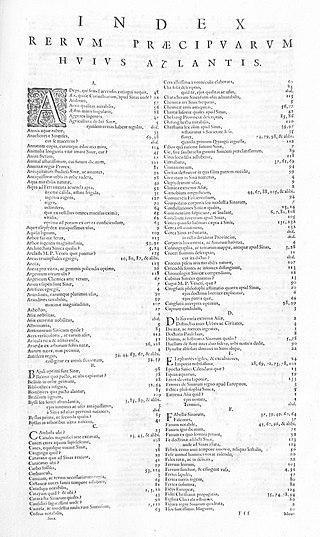DocBook is a semantic markup language for technical documentation. It was originally intended for writing technical documents related to computer hardware and software, but it can be used for any other sort of documentation.
News style, journalistic style, or news-writing style is the prose style used for news reporting in media, such as newspapers, radio and television.
Plain language is writing designed to ensure the reader understands as quickly, easily, and completely as possible. Plain language strives to be easy to read, understand, and use. It avoids verbose, convoluted language and jargon. In many countries, laws mandate that public agencies use plain language to increase access to programs and services. The United Nations Convention on the Rights of Persons with Disabilities includes plain language in its definition of communication.
Readability is the ease with which a reader can understand a written text. The concept exists in both natural language and programming languages though in different forms. In natural language, the readability of text depends on its content and its presentation. In programming, things such as programmer comments, choice of loop structure, and choice of names can determine the ease with which humans can read computer program code.

Speed reading is any of many techniques claiming to improve one's ability to read quickly. Speed-reading methods include chunking and minimizing subvocalization. The many available speed-reading training programs may utilize books, videos, software, and seminars. There is little scientific evidence regarding speed reading, and as a result its value seems uncertain. Cognitive neuroscientist Stanislas Dehaene says that claims of reading up to 1,000 words per minute "must be viewed with skepticism".

Scientific literature encompasses a vast body of academic papers that spans various disciplines within the natural and social sciences. It primarily consists of academic papers that present original empirical research and theoretical contributions. These papers serve as essential sources of knowledge and are commonly referred to simply as “the literature” within specific research fields.

Technical writing is a growing profession required in many of today's manufacturing, medical and research organizations. These organizations rely on technical writing to communicate complex information to customers/clients, co-workers or engineers/scientists by incorporating a mix of simplified content and visual communication.
Technical communication is communication of technical subject matter such as engineering, science, or technology content. The largest part of it tends to be technical writing, though importantly it often requires aspects of visual communication. Technical communication also encompasses oral delivery modes such as presentations involving technical material. When technical communication occurs in workplace settings, it's considered a major branch of professional communication. In research or R&D contexts, it can overlap with scientific writing.

An index is a list of words or phrases ('headings') and associated pointers ('locators') to where useful material relating to that heading can be found in a document or collection of documents. Examples are an index in the back matter of a book and an index that serves as a library catalog. An index differs from a word index, or concordance, in focusing on the subject of the text rather than the exact words in a text, and it differs from a table of contents because the index is ordered by subject, regardless of whether it is early or late in the book, while the listed items in a table of contents is placed in the same order as the book.
Copywriting is the act or occupation of writing text for the purpose of advertising or other forms of marketing. Copywriting is aimed at selling products or services. The product, called copy or sales copy, is written content that aims to increase brand awareness and ultimately persuade a person or group to take a particular action.
In HTML, the standard markup language for documents designed to be displayed in a web browser, <div> and <span> tags are elements used to define parts of a document, so that they are identifiable when a unique classification is necessary. Where other HTML elements such as <p> (paragraph), <em> (emphasis), and so on, accurately represent the semantics of the content, the additional use of <span> and <div> tags leads to better accessibility for readers and easier maintainability for authors. Where no existing HTML element is applicable, <span> and <div> can valuably represent parts of a document so that HTML attributes such as class, id, lang, or dir can be applied.
A Website content writer or web content writer is a person who specializes in providing content for websites. Every website has a specific target audience and requires the most relevant content to attract business. Content should contain keywords aimed towards improving a website's SEO. A website content writer who also has knowledge of the SEO process is referred to as an SEO Content Writer.

Structured writing is a form of technical writing that uses and creates structured documents to allow people to digest information both faster and easier. From 1963 to 1965, Robert E. Horn worked to develop a way to structure and connect large amounts of information, taking inspiration from geographical maps. He coined the term "Information Mapping" to describe his method of analyzing, organizing, and displaying knowledge in print and in the new online presentation of text and graphics.
Article spinning is a writing technique used in search engine optimization (SEO), and other applications, which creates what deceitfully appears to be new content from what already exists. Content spinning works by replacing specific words, phrases, sentences, or even entire paragraphs with any number of alternate versions, in order to provide a slightly different variation with each spin — also known as Rogeting. This process can be completely automated or written manually as many times as needed. Early content produced through automated methods often resulted in articles which were hard or even impossible to read. However, as article-spinning techniques were refined they became more sophisticated, and can now result in readable articles which, upon cursory review, can appear original.

An intentionally blank page is a page that has no content and may be unexpected. Such pages may serve purposes ranging from place-holding to space-filling and content separation. Sometimes, these pages carry a notice such as "This page was intentionally left blank." Such notices typically appear in printed works, such as legal documents, manuals, and exam papers, in which the reader might otherwise suspect that the blank pages are due to a printing error and where missing pages might have serious consequences.
The Jane Schaffer method is a formula for essay writing that is taught in some U.S. middle schools and high schools. Developed by a San Diego teacher named Jane Schaffer, who started offering training and a 45-day curriculum in 1995, it is intended to help students who struggle with structuring essays by providing a framework. Originally developed for personal narratives and essays about literature, the curriculum now also covers expository and argument essays.
In common usage and linguistics, concision is a communication principle of eliminating redundancy, generally achieved by using as few words as possible in a sentence while preserving its meaning. More generally, it is achieved through the omission of parts that impart information that was already given, that is obvious or that is irrelevant. Outside of linguistics, a message may be similarly "dense" in other forms of communication.
Form and Document Creation is one of the things that technical communicators do as part of creating deliverables for their companies or clients. Document design is: "the field of theory and practice aimed at creating comprehensible, persuasive and usable functional documents". These forms and documents can have many different purposes such as collecting or providing information.
Hummingbird is the codename given to a significant algorithm change in Google Search in 2013. Its name was derived from the speed and accuracy of the hummingbird. The change was announced on September 26, 2013, having already been in use for a month. "Hummingbird" places greater emphasis on natural language queries, considering context and meaning over individual keywords. It also looks deeper at content on individual pages of a website, with improved ability to lead users directly to the most appropriate page rather than just a website's homepage.
In literature, pace or pacing is the speed at which a story is told—not necessarily the speed at which the story takes place. It is an essential element of storytelling that plays a significant role in maintaining reader interest, building tension, and conveying the desired emotional impact. The number of words needed to write about a certain event does not depend upon how much time the event takes to happen; it depends upon how important that moment is to the story. The pace is determined by the length of the scenes, how fast the action moves, and how quickly the reader is provided with information. A well-paced story effectively balances moments of high intensity and slower-paced sections to create a dynamic reading experience. It is also sometimes dictated by the genre of the story: comedies move faster than dramas; action adventures move faster than suspense. A dragging pace is characteristic of many novels turned down by publishers, and of some that find their way into print but not into the hearts and recommendations of readers. Manuscripts that move too slowly usually discourage readers from reading on. Through various editing techniques, such as cutting unnecessary details, rearranging scenes, or suggesting additions, editors assist in maintaining an engaging pace that keeps readers captivated. Yanna Popova and Elena Cuffari elaborate that as editors they, "explore the participatory structure of a narrative through its temporal unfolding and the specific, non-linear nature of the temporal dynamics of interacting with a storytelling agency". Popova and Cuffari make clear that the way an author unfolds a story through structuring that narrative's tale is essential to the way the audience will interpret it.





